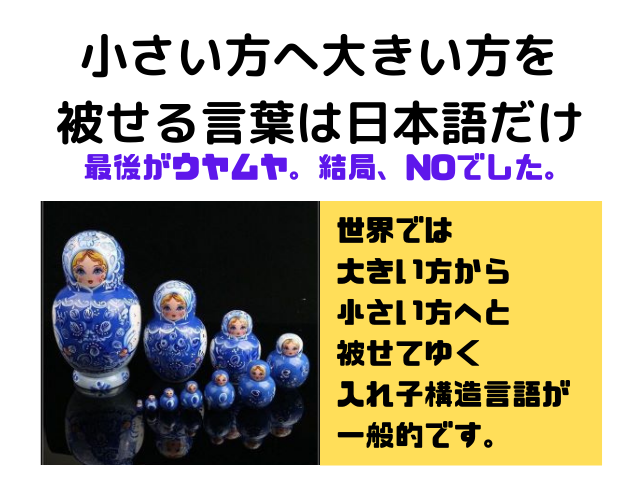入り子構造が逆。
誰と誰との話かあいまい
何故、日本語は小から大へ言葉を紡ぐのか?日本語は小さい人形から話しはじめて、終わりに結論(大きい人形)を話します。一番大きな人形にイエス、ノウが入っています。日本人は話をアバウトにするのが得意です。
誰と誰との話であるかをあいまいにするから、翻訳文で誤解がいつも生まれます。
1.reverse nested structure
Why does Japanese spin words from small to large? Japanese starts with small dolls and ends with conclusions (large dolls). The largest doll contains yes and no.Japanese people are good at speaking roughly.Misunderstandings always arise in translated texts because they obscure who is talking to whom.

From unimportant to important

インド・ヨーロッピア語は先に結論
大きな人形・イエス、ノウから
話しが始じまって、次々と細部(小さな人形)を説明しますから、コミュニケーションが正確です。
In Indo-European, the story starts with the conclusion (big dolls) yes, no, and then explains the details (small dolls) one after another, so communication is accurate.

下記、コメントは日本の有名な国際的ビジネスマンの見解ですので私が紹介します。
日本人は21世紀の国際社会でまともな仕事ができないのではないか?
理由は国民が,
(1)ものの本質の究明力,
(2)相手に対する説得力
(3)イノベーション力。ないことであるという。
日本人の評判は悪すぎる。本質に迫れない、うやむや,先送りが習慣となっている。
日本語の長さは短い
英語は長くなる。日本語は省くからである。
Japanese is short, English is long. This is because Japanese is omitted.
